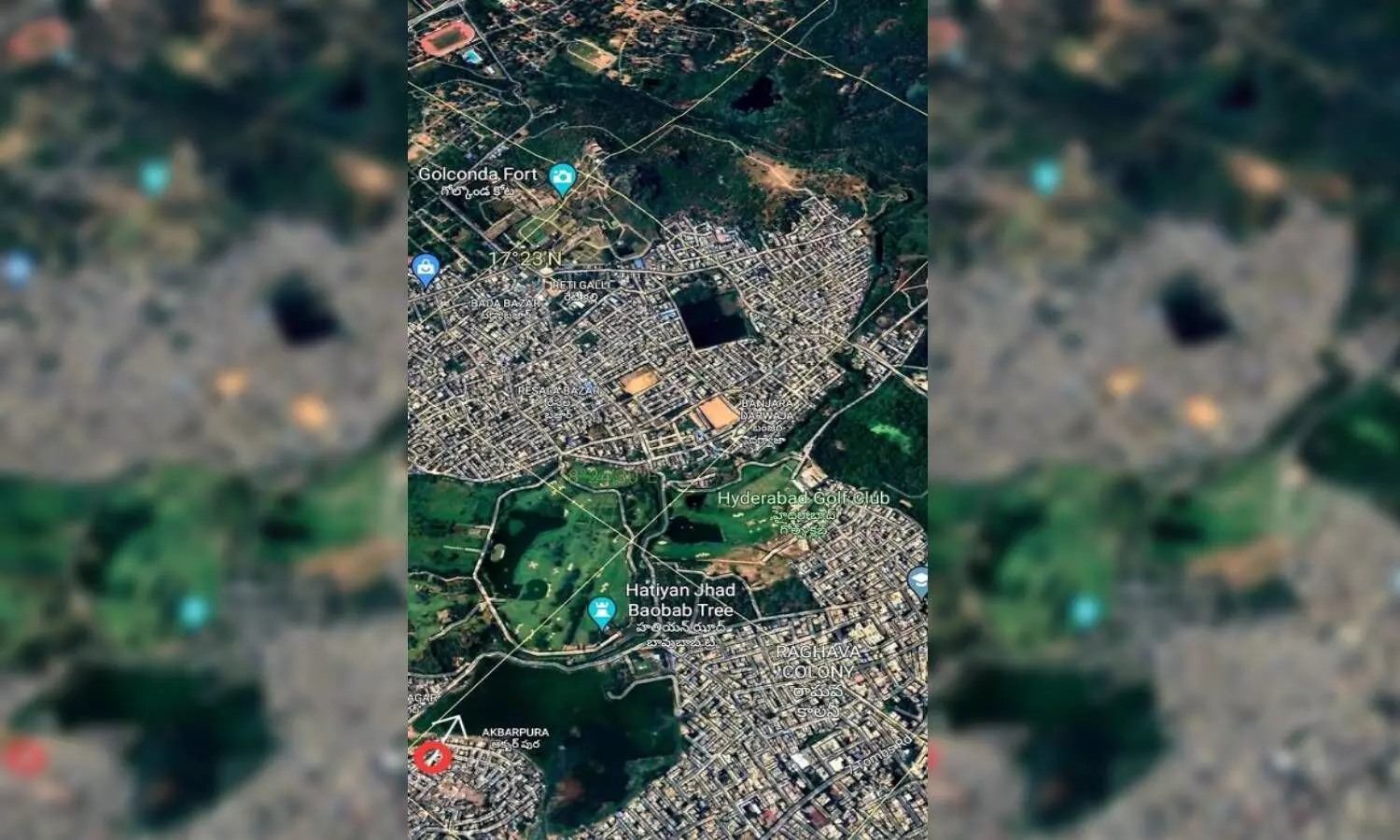Shah Hatim Talab: Once a mirror for Golconda Fort but now choked by garbage
The 130-year-old photograph taken by Raja Deen Dayal also shows the reflection of the outer fort wall in the waters of the talab. But the talab no longer reflects anything.
By Nimisha S Pradeep
Hyderabad: The reflection of the big fort that stands atop a hill falls on the clear blue water. The pond is surrounded by lush greenery. This is a painting of the Shah Hatim Talab (pond) adjacent to the Golconda Fort done by Sanghamitra Malik when she was a schoolgirl in 1968. "I didn't have a camera to take photos like today, but everything was clicked in my memory," says Sanghamitra.
Sanghamitra's father was a doctor in the army so they lived in the MD Lines military officers' quarters in the late 1960s. "From the verandah of our home, we could see the Shah Hatim Talab and the reflection of the Golconda Fort which stood beside it," recalls Sanghamitra.
Later, they moved to a house in Tolichowki where she says they continued to get the view of the talab but from a different angle. "We thought everything will remain forever. But so many encroachments came up over the years and now the buildings obstruct the view," says Sanghamitra who is now a social activist. After living in the city for over 50 years, she has grown attached to the city. She is pained to see her city change. "This is not the Hyderabad where I grew up as a child," she says.
Recently, heritage enthusiast and architect Asif Ali Khan tweeted a 130-year-old rare photograph of the Shah Hatim Talab taken by famous photographer Raja Deen Dayal. He also shared satellite images marking the place from where Raja Deen Dayal would have taken that photograph and the bastion of the Golconda Fort. Like in Sanghamitra's painting, the photograph also shows the reflection of the outer fort wall in the waters of the talab. But the talab no longer reflects anything.
Sharing the rare photo, Asif asked, "Can you see the reflection now?"
He adds, "Sadly, we cannot see the beautiful reflected image of the outer fortification wall, bastion, and battlement of the Golconda fort anymore in the shimmering waters of the Shah Hatim talab. This is due to the massive dumping of soil, construction debris, garbage, etc."
In the Nizam's dominion or the Deccan region, hundreds of lakes – manmade and natural – were used to support communities and agriculture. But now, the same talab has become a disposal ground for medical wastes, construction debris, and animal carcasses even as hyacinth grows wild. Also, due to illegal encroachments and constructions beside and on the water body, colonies in the areas near the talab were flooded during the rains in the last two years. Constructions were carried out ignoring the pond's Full Tank Level (FTL). Asif says if we mess with nature, it will hit back.
"Hyderabad is a happening city. It is expanding. but my question is can't the expansion be done without destroying the past, environment, and heritage?" asks Sanghamitra. She adds, "You can modernise a city, but without destroying the old."
It's not just the Shah Hatim talab but also bigger lakes like the Hussain Sagar that have shrunk in size and are covered with filth and other wastes. Sanghamitra adds that not just lakes, but the greenery and the rock formations for which the city has been known, are being erased.
"The Shah Hatim talab which was an important water source for the Golconda Fort, Qutub Shahi Tombs, and adjoining areas centuries ago has slowly deteriorated in size and purity. It's high time that the devastation of water bodies is checked and rectified so that further damage is prevented. It's the need of the hour," says Asif.
"Only if we have respect for heritage can we protect it," adds Asif.